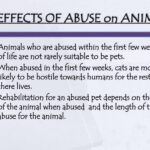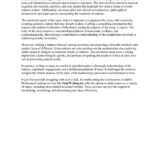Animal cruelty is a perplexing phenomenon that elicits a tumult of emotions and intellectual discourse, often painting a distressing tableau of societal indifference. Understanding this issue requires us to delve into the complexities surrounding the treatment of non-human creatures, through both emotional and logical prisms. This exploration illuminates the myriad forms and ramifications of cruelty, fundamentally challenging our preconceived notions about the human-animal relationship.
At its core, animal cruelty manifests in numerous ways—ranging from blatant acts of violence to more insidious forms of neglect. The traditional image might conjure thoughts of physical harm: a dog left outside in below-freezing temperatures, or a cat subjected to an abusive owner’s whims. Such scenarios are horrifying, but they barely scratch the surface of a deeper malaise. There exists a subtler, capitalistic exploitation of animals too, in factories where livestock are crammed into cages barely larger than their bodies, deprived of natural instincts and existence.
Imagine, for a moment, a factory farm, a veritable prison for sentient beings. Each animal lives a meticulous yet dismal life—a cacophony of bleats, clucks, and grunts intermingles with industrial noise, echoing their despair. Here, are animals stripped of dignity, an eerie reflection of human indifference turned callous. This dismal reality is often obscured by the sanitized façade of consumerism. The pervasive disconnect between the source of our food and its robust packaging delivers a disquieting metaphor for modern alienation; just as we frequently fail to recognize the profound suffering inherent in our consumption, we abstain from grappling with the ethical dimensions it encapsulates.
In its broader strokes, animal cruelty is not merely an individual act but signifies a systemic failure—a societal malaise symptomatic of our historical disposition towards dominion over nature. To inject logic into this discourse, we must scrutinize the ethical frameworks that govern human treatment of animals. Utilitarianism suggests that the right action is the one that maximizes overall happiness; yet, if one were to apply this perspective rigorously, the suffering endured by countless animals would weigh heavily against the trivial pleasures derived from their exploitation.
Engaging in a logical debate requires us to pivot from mere emotional appeals to philosophical inquiries. What gives us the right to impose our whims upon creatures that cannot advocate for themselves? This query strikes at the heart of anthropocentrism—an unequal elevation of human interests above all else. If we accept that animals are sentient beings capable of experiencing pain, fear, and joy, the argument for their protection burgeons beyond mere ethical obligation; it transforms into an imperative for justice.
However, the emotional landscape surrounding animal cruelty cannot be overlooked. When we consider the images and stories of abused animals, a visceral response arises. It pulls at the heartstrings, igniting compassion and perhaps guilt within us. This emotional connection is powerful but fraught with complexity. It can catalyze action, but it may also lead to desensitization if continuously confronted with images of suffering. The challenge lies in transforming that initial emotional response into sustained advocacy and commitment to ethical treatment.
Moreover, emotional appeals can serve effectively in public discourse, fostering awareness that cold statistics cannot. A poignant image of an abused animal, sprawled against the backdrop of a stark, desolate landscape, evokes a powerful response that logic cannot encapsulate. It remains imperative, however, that these emotional appeals are grounded in factual narratives—calling for responsible representations that avoid sensationalism while still compelling action.
One might also consider the cultural dimensions of animal cruelty. In varying societies, attitudes toward animals diverge significantly. In some cultures, animals are revered and protected, enshrined within folklore and tradition. In others, they are seen merely as commodities, much like any other resource to be exploited. These inherent disparities complicate the conversation around animal rights and welfare, necessitating a culturally sensitive approach when engaging in dialogue about cruelty.
Moreover, an exploration of animal cruelty uncovers a vicious cycle: cruelty begets cruelty. Children who exhibit violent behaviors towards animals are statistically more likely to engage in violence later toward humans. Such behavior is not only a reflection of individual pathology but also a societal failure to instill empathy and respect for all living beings. Therefore, addressing animal cruelty is not solely about protecting animals; it is also about cultivating a more compassionate future.
Yet, advocacy against animal cruelty does not dwell only within the moral bounds of right and wrong. It calls into question our ecological integrity and the sustainability of our practices. Every act of cruelty reverberates through the entangled web of life—it is not merely an isolated incident but rather an affront to the fabric of biodiversity. The extinction of a species and mistreatment of another contribute to an ever-depleting tapestry of life, threatening the balance that sustains us all.
In conclusion, navigating the terrain of animal cruelty demands both emotional and logical engagements. While it resonates deeply on an emotional level, capitalizing on that connection is instrumental for meaningful advocacy. Logic guides ethical deliberation, demanding substantive reflection on the rights of animals and the very essence of our humanity. Ultimately, our response to animal cruelty should be a blend of compassion and rationality—where emotional narratives stimulate change and rigorous thought reinforces advocacy. Together, they compose the potent antidote to a culture of cruelty, advocating for a world where all beings engage in a respectful, empathetic coexistence.







